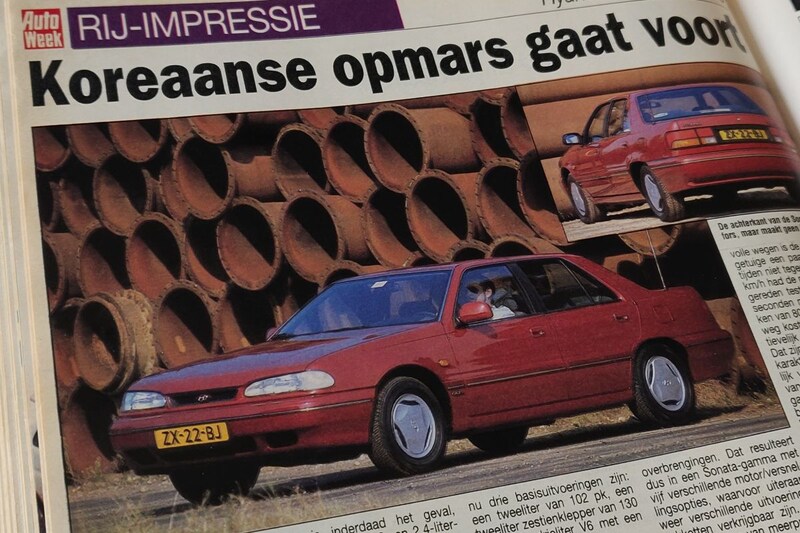In the 1980s, Hyundai made its first attempt to win Europe over and anyone who then told them how successful the brand would be now was probably thought to be crazy. In the early 1990s, however, it became clear that the South Koreans knew what they were doing.
What the Chinese trying it in Europe now experience, used to be true for the South Koreans. Hyundai’s attempts to sell cars here were followed with a fair dose of suspicion. It did not help that in the beginning Hyundai sold partly heated mashes of other brands with their own sauce over it. Towards the 1990s, attention shifted to models of their own, which, according to skeptics, could have become a blueprint for ruin, but it never became. The Hyundai Sonata, which was refreshed in 1991 and tested by Techzle, proved that.
The second generation of the Hyundai Sonata stood on a completely new platform and was now front-wheel drive. Under the skin, therefore, more contemporary, but in terms of appearance the second Sonata was not yet very spectacular. This was largely rectified during the facelift in 1991. The Sonata looked a bit fresher and sharper, although you wouldn’t steal the show with it in the middle class. The Sonata did not have to excel in that area either, above all it had to do a lot bang for your buck to deliver.

Hyundai Sonata
The pre-facelift Sonata didn’t disappoint us, yet Hyundai proved in 1991 that it was capable of rapid improvement. This was largely due to new power sources. The old four-cylinder engines with a single camshaft made way for new ones, one of which had a double camshaft and sixteen valves. For example, there was now a Sonata available with a 130 hp 2.0. For those who wanted it even wider, there was the choice of a 3.0 V6 that sent 145 hp to the front wheels. The big advantage of the 16-valve 2.0, however, was that it was just as strong as the outgoing 2.4, but with better fuel economy. In addition, the block turned out to be fine. “From 0-100 km/h, the test car, which had not yet been completely run-in, took roughly 12 seconds and accelerating from 80 to 120 on the highway in 4 and 5 took 11.4 and 14.5 seconds respectively. Those are – despite the rather quiet nature of the engine – pretty smooth times for a car of this size and weight.”

Hyundai Sonata
Moreover, Hyundai had managed to make a quality improvement in terms of comfort. It was now noticeably quieter in the interior. Engine noise, driving wind and other noises did not disturb the peace. The Sonata was also well equipped in terms of equipment, with electrically operated windows, separately adjustable heating for the rear and a standard radio/cassette player. Yes, different times. All in all, Hyundai had done its homework well and we could therefore conclude that for the price (32,950 guilders for the 2.0i, 39,950 guilders for the 2.0i 16v and 47,950 guilders for the 3.0i V6) it is a lot of car for the money was. “…because of its comfort, its performance and certainly its price, it is a very attractive middle class car on the Dutch market.”
Partly thanks to the Sonata, Hyundai achieved a new sales record in the Netherlands a year later with 7,803 cars sold. However, 1992 also proved to be the top year for the facelifted Sonata with 622 units. It was clear that Hyundai had a good taste for innovation when it came up with a new generation in 1993 (quite shortly after the facelift of the second Sonata). It has just never been able to surpass its predecessor in the Dutch sales figures. In the end, Hyundai would never really win over the middle class here, although we all know that they fared and are faring more than fine in other classes.
– Thanks for information from Techzle.nl
